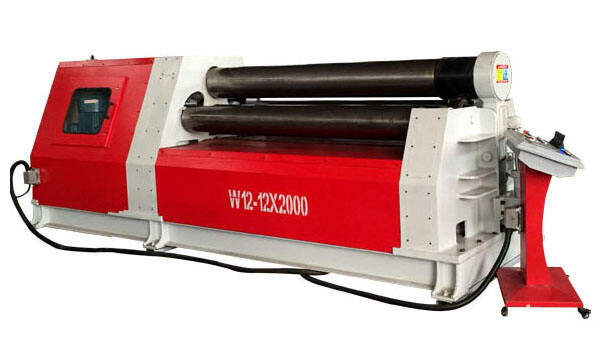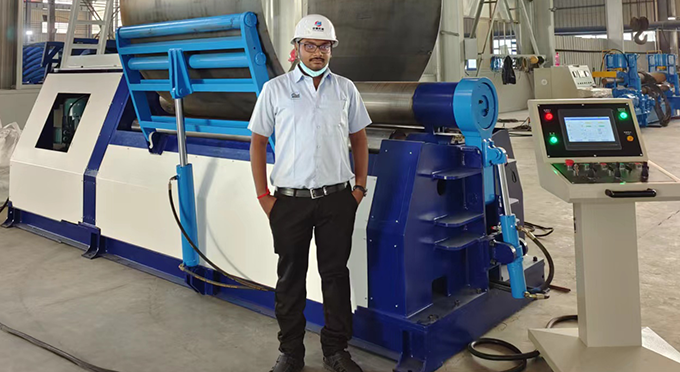Streamlining Complex Shape Production
In the realm of metal fabrication, utilizing advanced profile bending machines is pivotal for efficiently crafting intricate shapes. By capitalizing on the latest technology, manufacturers can significantly reduce setup time and streamline workflow. This enhancement can markedly increase production rates. Incorporating CNC technology into the bending process provides precise control over the creation of complex shapes, ensuring adherence to stringent design requirements without extensive manual corrections. The addition of automation systems, especially with CAD/CAM software integration, further refines the process. This seamless transition from design to production minimizes errors, boosting overall efficiency and precision in metal fabrication.
The modern profile bending machine is a prime example of this technology in action. It's tailored for metal fabricators who need to maintain high standards while producing complex forms. The CNC aspect is especially significant, as it allows for detailed adjustments that were not feasible with older machine models. Moreover, integrating systems such as CAD/CAM not only provides the benefits of technological advancement, it also mitigates human error, ensuring a more accurate and efficient production cycle.
Uniformity and Repeatability in Manufacturing
Uniformity in manufacturing is crucial, and CNC operations are at the forefront of achieving this. Unlike traditional methods, CNC systems enhance repeatability, which is vital for maintaining consistent quality standards. Regularly scheduled maintenance for hydraulic systems is equally important; it keeps them in optimal working condition and prevents variations that might lead to defects in final products. By employing Statistical Process Control (SPC) techniques, companies can continuously monitor quality levels. This method provides valuable data, facilitating the consistent production of high-quality parts and boosting customer satisfaction.
Statistical Process Control is particularly useful in this context, as it essentially creates a feedback loop for quality improvement. By accumulating data, manufacturers can pinpoint areas needing modification and take preventive measures against potential issues. This proactive approach not only maintains the integrity of the manufacturing process but also enhances the reliability of the products being fabricated, ultimately benefitting both the producer and the consumer with higher quality deliverables.
These advancements ensure that manufacturing processes are not only efficient and precise but also adaptable and sustainable in the long term.
Cost Reduction and Increased Return on Investment
Minimizing Labor Costs with Automation
Integrating automated systems and machinery like CNC presses can significantly reduce labor costs by minimizing the need for manual intervention. This shift towards automation not only lowers labor expenses but also increases throughput, enabling companies to allocate resources efficiently and focus on higher-value tasks. For instance, studies have demonstrated that automation in manufacturing can lead to operational cost reductions of up to 30%, which represents a substantial increase in a company's overall ROI. This cost-effective strategy allows manufacturers to streamline operations and make the most of their human resources, ultimately contributing to enhanced productivity and financial performance.
Long-Term Financial Benefits
Investing in high-quality profile bending machines offers reliable, long-term performance, which translates into lower maintenance costs and extended equipment lifespan. Financial analyses often reveal that companies can achieve a return on investment within a period of 3-5 years when they opt for automation technology, thanks to decreased operational expenses. Additionally, the capability to produce high-quality components at a faster rate allows manufacturers to respond more effectively to market demands, further enhancing profitability. This proactive approach not only boosts the company's bottom line but also strengthens its competitive position in the ever-evolving market landscape.
Operational Best Practices and Safety Protocols
Essential Maintenance Tips for Hydraulic Systems
Regular maintenance of hydraulic systems is vital for the smooth operation of machinery, particularly in metal fabrication industries. By conducting periodic inspections and servicing, we can detect wear and tear early, thus minimizing the risk of costly downtime. It's essential to establish a routine maintenance schedule that aligns with manufacturer recommendations to ensure the longevity of such systems. Documentation of all maintenance activities not only enhances accountability but also guarantees compliance with safety standards, thereby contributing to the reliability of operations. These practices ensure that our hydraulic systems remain efficient and operational, allowing us to focus on enhancing productivity with minimized disruptions.
Ensuring Operator Safety with CNC Controls
Operator safety is paramount when working with CNC machinery, and implementing comprehensive training programs is key to ensuring that operators understand safety protocols. By equipping operators with knowledge on emergency stops, guards, and warning systems, we can greatly reduce the risk of workplace accidents and injuries. Additionally, regular safety audits are crucial for identifying potential hazards, allowing for immediate corrective actions to be taken, ensuring compliance with occupational safety regulations. These measures not only protect our workforce but also uphold the integrity of our operations, encouraging a safer work environment and sustainable productivity.
Advanced Technologies in Profile Bending
Hydraulic vs. CNC Plate Bending Machines
Choosing between hydraulic and CNC plate bending machines depends largely on specific operational needs. Hydraulic bending machines are recognized for their strength and versatility, making them ideally suited for heavy-duty applications involving the bending of robust materials. Conversely, CNC machines excel in precision and automation, catering to high-volume production with minimal manual intervention. By analyzing operational demands, one can make informed investment decisions, thereby ensuring optimal performance and desired quality in output. Recent enhancements in CNC technology have also made these machines more accessible and cost-effective, narrowing the efficiency gap between them and traditional hydraulic systems.
Integration with Heavy-Duty Plate Rolling Systems
Integrating profile bending machinery with heavy-duty plate rolling systems can significantly streamline operations. This combination facilitates the smooth transition of complex shapes from rolling to bending, thereby reducing handling and processing times. In essence, aligning these technologies not only enhances production efficiency but also improves workflow, supporting broader manufacturing goals. By leveraging the strengths of each machine type, manufacturers can achieve seamless operations that cater to diverse production requirements efficiently.
Versatile Applications Across Industries
Structural Fabrication in Construction
Profile bending machines play a crucial role in structural fabrication for the construction industry by producing essential components. These machines enhance the strength and durability of structural frameworks, allowing for the creation of robust and reliable buildings. The versatility of profile bending machines makes them indispensable for crafting various shapes and forms, which are integral to constructing diverse structures, including commercial buildings and bridges. Utilizing advanced bending techniques ensures that components meet engineering standards and contribute to safety in building practices.
This adaptability means that construction engineers can create custom solutions tailored to specific requirements. For instance, the capability to bend steel beams and columns into precise shapes can improve connection efficiency and load distribution in structures. By adhering to stringent engineering criteria, these machines not only support but also significantly enhance infrastructure development across many construction projects.
Automotive and Aerospace Manufacturing Solutions
In the automotive and aerospace sectors, precision is of utmost importance, and profile bending machines are vital in achieving the high degree of accuracy required. These machines cater to the stringent demands of these industries by delivering components that optimize part accuracy and weight reduction. The ability to produce specialized automotive and aerospace parts, such as chassis components and aerodynamic frames, showcases the adaptability of these machines in meeting unique industry requirements.
Moreover, collaborative research initiatives between manufacturers often lead to innovations in technology and materials, further expanding the capabilities of profile bending machines. The ongoing development of new techniques or specialized alloys enhances the performance of these machines, making them even more effective in handling complex or lightweight structures. This symbiotic relationship between technology and industry requirements ensures that profile bending machines continue to evolve, keeping pace with the demands of modern engineering and manufacturing.




